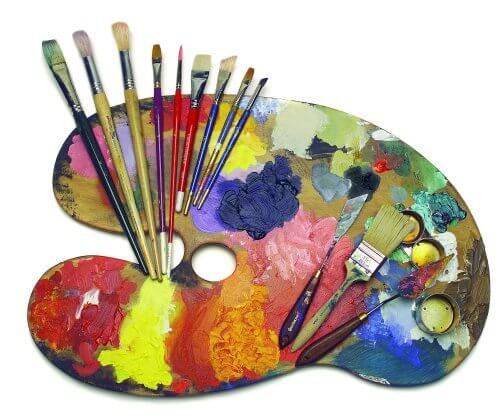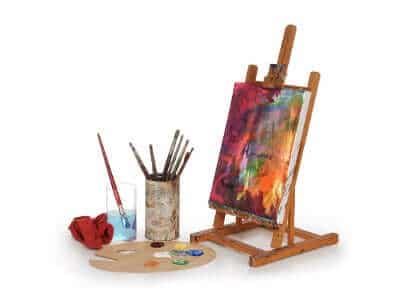 The oil painting It undoubtedly represents one of the most valid alternatives for painting paintings on canvas. It is not by chance that history has seen oil painting establish itself and spread throughout the western and Eastern world, with the highest results achieved by classical art. Over the centuries several currents have followed, each of which has used a particular technique of oil painting to express its own vision of reality. In this article I have collected 5 of the most important techniques of yesterday and today: to each one the pleasure of experimenting in freedom the preferred technique on canvas or on other kind of support, depending on their tastes and inclinations.
The oil painting It undoubtedly represents one of the most valid alternatives for painting paintings on canvas. It is not by chance that history has seen oil painting establish itself and spread throughout the western and Eastern world, with the highest results achieved by classical art. Over the centuries several currents have followed, each of which has used a particular technique of oil painting to express its own vision of reality. In this article I have collected 5 of the most important techniques of yesterday and today: to each one the pleasure of experimenting in freedom the preferred technique on canvas or on other kind of support, depending on their tastes and inclinations.
Velatura
As the name implies, the Velatura It is based on a very simple principle: to overlap with an existing layer of colour an additional thin “veil”, with the function of highlighting lights, shadows and transparencies. Raphael, Michelangelo, Leonardo and Tiziano are just some examples of painters who have brought this technique to the top.
Gradient
Diffused by the genius of Leonardo da Vinci, the nuanced is a technique of oil painting in which the contours of the figures are progressively attenuated, without apparent interruption between one gradation and the other. Among the most extraordinary outcomes of this technique are the Gioconda, on whose face, in particular, is recognizable the use of the nuanced.
Tonalism
Considered by many to be an evolution of the nuanced, the Tonalism – or tonal painting – is the result of the re-elaboration of Leonardo da Vinci’s pictorial work by Giorgione, Tiziano and other illustrious artists of the Venetian area. This technique is distinguished by the gradual drafting of tone-on-tone color, with stunning depth and light effects. Famous was the Venetian school, whose style became famous also in the rest of Europe, influencing generations of artists.
Pointillism
Born in the wake of the new scientific evidence of the end of ‘ 800 in the field of visual perception, the Pointillism It is characterized by the use of dots (hence the name) instead of strokes of brush. The combination of thousands of these dots creates effects of great scenic impact, although the atmospheres remain colder and more detached than the nuanced, tonalism or other oil and other techniques.
Glacis
The Glacis It is an oil painting technique based on the mixture of pigments and natural Earths. Nowadays it is not necessary to produce the mixtures, just go to a specialized store and ask for glacis colors. Although there were no significant exponents of this technique, the glacis remains an interesting test bench for novice artists and experienced painters.
MY ADVICE

The most suitable support for oil colors is the canvas and can also be used to obtain material effects using the spatula or, if diluted, can be applied for color overlaps with slight stratifications obtaining Very subtle nuances.
For example to get theEffect of the complexion You have to make a very careful study of how many shades of color to use to give the effect of the skin.
To dilute them you use turpentine or turpentine or mix the color with flaxseed oil, in this way the drying processes are lengthened and you can continue to overlap different layers and make color veils, to give very suggestive effects.
THE Oil colors They are very bright and you can get beautiful depths and shades of color.
Many times the oil painting It is used when you want to achieve very realistic effects eg. A portrait or a landscape, trying to simulate the effect of a photograph, but surely in a more poetic and exciting.
The oil colors are also very long lasting and if you paint an oil painting can also not serve a Final paint protection.
For the preparation you can use brushes of ox or synthetic, but the most important thing is to have patience and do so much practice so you will surely get amazing results.


